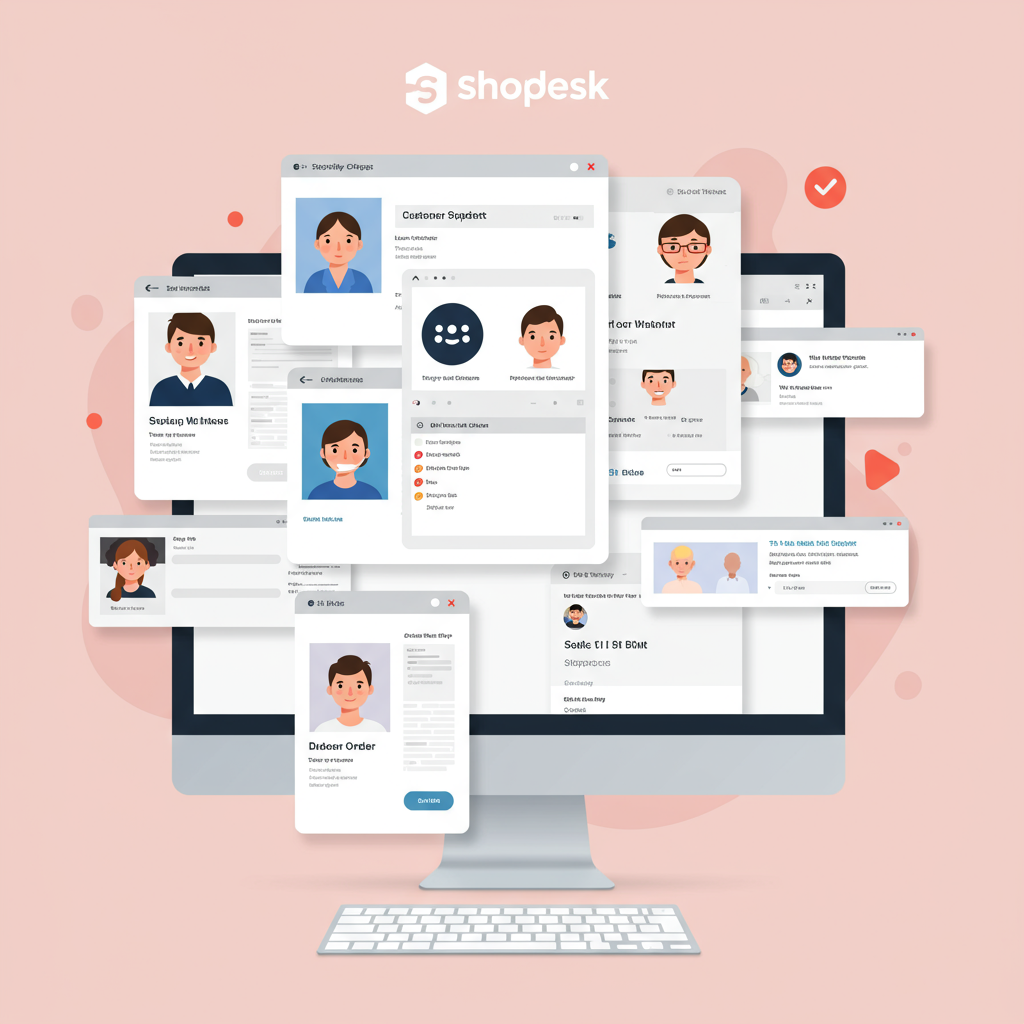Streamline your customer service, boost efficiency, and delight your customers with the right support solution.
As a Shopify merchant, I’ve learned firsthand that customer service isn’t just a department; it’s the backbone of a thriving e-commerce business.
In today’s competitive landscape, customers expect quick, personalized, and efficient support across multiple channels.
This is where a dedicated helpdesk app becomes not just a luxury, but an absolute necessity for your Shopify store.
I remember the early days, juggling emails, social media DMs, and live chat requests manually. It was chaotic, inefficient, and frankly, unsustainable.
That’s when I realized I needed a centralized system to manage all customer interactions. A good helpdesk app streamlines everything.
It allows you to track inquiries, automate responses, and provide a consistent experience, no matter how your customers choose to reach out.
But with so many options available, how do you choose the best helpdesk app for *your* specific Shopify store?
I’ve spent a considerable amount of time researching and even trying out several of these solutions. Let me share my insights to help you make an informed decision.
First, let’s talk about the essential features I always look for. Multi-channel support is paramount. Your customers are everywhere – email, chat, social media, phone.
A robust helpdesk consolidates all these interactions into a single, unified inbox. This means no more missed messages or fragmented conversations.
Automation capabilities are another game-changer. Think about frequently asked questions. A good helpdesk allows you to set up automated responses or self-service knowledge bases.
This frees up your support team to focus on more complex issues, significantly improving efficiency and response times.
Deep integration with Shopify is non-negotiable. The best apps pull customer order history, shipping details, and other relevant data directly into the support ticket.
This context allows your agents to provide personalized and accurate support without constantly switching between tabs or asking customers for information they’ve already provided.
Reporting and analytics are also crucial. I rely on these insights to understand common customer issues, identify areas for improvement, and measure my team’s performance.
Scalability is another key consideration. As your Shopify store grows, your customer service needs will evolve. Choose an app that can grow with you, offering advanced features as you expand.
Finally, ease of use for both agents and customers is vital. A clunky interface will hinder efficiency, while a complex customer portal will frustrate your users.
Now, let’s dive into some of the top helpdesk apps that integrate seamlessly with Shopify, based on my experience and extensive research.
**Gorgias** is often hailed as the king of e-commerce helpdesks, and for good reason. It’s built specifically for Shopify merchants.
Its deep integration allows agents to edit orders, issue refunds, and even create new orders directly from the helpdesk interface. This saves an incredible amount of time.
Gorgias excels in automation, allowing you to set up rules based on keywords, order status, and more, significantly reducing manual workload.
**Zendesk** is a powerhouse, a comprehensive customer service platform suitable for businesses of all sizes, including large Shopify stores.
While it might have a steeper learning curve than some others, its extensive features, customization options, and robust reporting are unmatched.
Zendesk offers a wide array of integrations beyond Shopify, making it a versatile choice if you have complex support needs across various platforms.
**Freshdesk** is another strong contender, known for its user-friendly interface and excellent value. It offers a good balance of features without being overly complex.
It provides multi-channel support, automation, and a solid knowledge base feature, making it a great choice for growing Shopify businesses.
**Help Scout** focuses on delivering a personal, human touch to customer service. Its shared inbox feels like a regular email client, making it intuitive for agents.
It’s less about complex automation and more about fostering genuine customer relationships, which can be a huge differentiator for your brand.
**Reamaze** is another e-commerce-focused helpdesk that offers live chat, email, social media, and even push notifications.
Its strength lies in its real-time communication features and its ability to integrate deeply with Shopify, providing order details directly within conversations.
When making your final decision, consider your budget, the size of your support team, and the volume of inquiries you receive.
Think about your specific needs: Do you prioritize live chat, extensive automation, or a simple, intuitive interface?
Most of these platforms offer free trials, which I highly recommend utilizing. Test them out with your actual customer service scenarios.
See how easily your team adapts to the interface and how effectively it integrates with your existing Shopify workflow.
Investing in the right helpdesk app is an investment in your customer satisfaction, your team’s efficiency, and ultimately, your store’s long-term success.
A happy customer is a repeat customer, and a streamlined support process is key to achieving that.
What do you think about this article? Did I cover the points you were looking for, or do you have other insights to share?
I truly believe that by centralizing your customer communications, you’ll gain invaluable insights and free up time to focus on growing your business.
Don’t underestimate the power of exceptional customer service in building brand loyalty and driving sales.
Choose wisely, and watch your Shopify store flourish with a robust support system in place.






